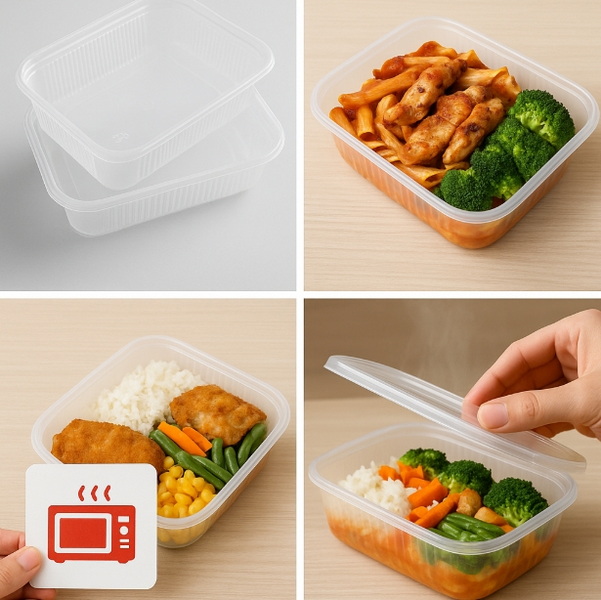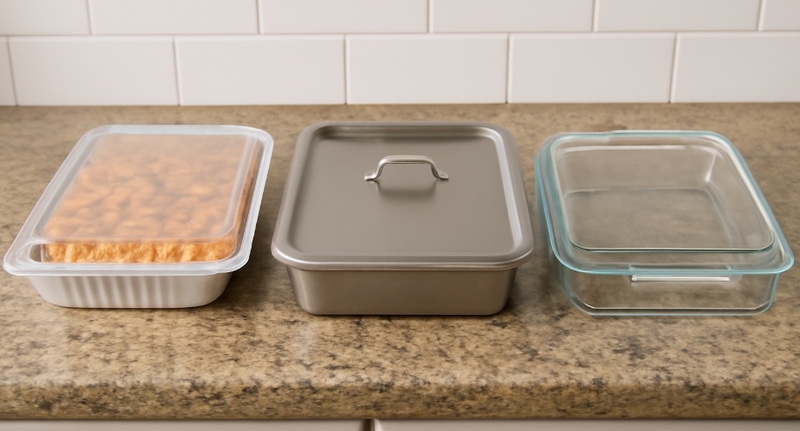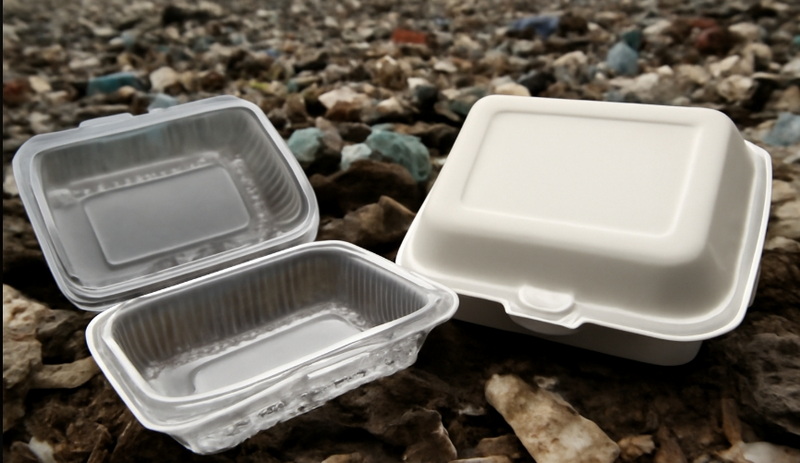
Content Menu
● Understanding Disposable Plastic Container Lunch Boxes
>> Polypropylene (PP): The Preferred Material
>> Polystyrene (PS): Use with Caution
>> PET and PVC: Not for Hot Food
>> LDPE: Limited Heat Resistance
● How Plastics Interact with Heat and Food
● Regulatory Standards and Safety Labels
>> Identifying Safe Plastics
● Health Risks Associated with Improper Use
● Best Practices for Using Disposable Plastic Container Lunch Boxes
● Environmental Considerations
● Alternatives to Disposable Plastic Container Lunch Boxes
● Conclusion
● FAQ: Common Questions About Disposable Plastic Container Lunch Boxes
>> 1. What type of disposable plastic container lunch box is safest for hot food?
>> 2. Can I microwave food in any disposable plastic container lunch box?
>> 3. Are there health risks if I use the wrong plastic lunch box for hot food?
>> 4. How can I tell if a disposable plastic container lunch box is food-grade?
>> 5. What are the best alternatives to disposable plastic container lunch boxes for hot food?
Disposable plastic container lunch boxes have become an essential part of modern life. Whether you're grabbing a quick takeaway meal, packing lunch for work, or storing leftovers, these containers offer unmatched convenience and affordability. However, as the use of disposable plastic container lunch boxes has surged, so too have concerns about their safety, especially when it comes to storing or reheating hot food. Are these containers truly safe for hot food, or do they pose hidden risks to our health and the environment? This comprehensive article explores the science, regulations, risks, and best practices associated with using disposable plastic container lunch boxes for hot food.

Understanding Disposable Plastic Container Lunch Boxes
Disposable plastic container lunch boxes are made from a variety of plastics, each with its own unique properties and safety considerations. The most common types include:
- Polypropylene (PP)
- Polystyrene (PS)
- Polyethylene Terephthalate (PET)
- Polyvinyl Chloride (PVC)
- Low-Density Polyethylene (LDPE)
Each type of plastic reacts differently to heat and food contact, which is crucial in determining whether a disposable plastic container lunch box is suitable for hot food.
Polypropylene (PP): The Preferred Material
Polypropylene is widely regarded as the safest choice for hot food applications. It has a high melting point, is chemically stable, and does not leach harmful substances when used appropriately. Most microwave-safe disposable plastic container lunch boxes are made from PP, making them suitable for both hot and cold foods.
Polystyrene (PS): Use with Caution
Polystyrene is lightweight and inexpensive but is not recommended for hot food. When exposed to heat, PS can release styrene, a chemical that may be harmful to health. Disposable plastic container lunch boxes made from PS are best reserved for cold foods.
PET and PVC: Not for Hot Food
PET is strong and recyclable but is generally intended for cold foods. PVC contains additives that can migrate into food, especially when heated, making it unsuitable for hot food storage.
LDPE: Limited Heat Resistance
LDPE is flexible and commonly used for wraps and some containers. While it is considered safe for most food storage, it can release microplastics and additives when heated, especially in direct contact with hot food.
How Plastics Interact with Heat and Food
When hot food is placed inside a disposable plastic container lunch box, heat can cause certain chemicals from the plastic to migrate into the food. The extent of this migration depends on several factors:
- The type of plastic used
- The temperature of the food
- The duration of contact
- The fat content of the food (fats can increase leaching)
- Whether the container is intended for hot food use
Regulatory Standards and Safety Labels
Manufacturers of disposable plastic container lunch boxes must comply with food safety regulations that specify which plastics are safe for food contact. These standards consider the type of food, storage duration, and temperature exposure.
Identifying Safe Plastics
To ensure you are using a safe disposable plastic container lunch box for hot food, look for the following:
- Recycling Code 5 (PP): Indicates polypropylene, which is safe for hot food and microwaving.
- Microwave-Safe Label: Shows that the container can withstand microwave temperatures without melting or significant chemical leaching.
- Food-Grade Certification: Ensures the plastic is manufactured to standards that minimize harmful chemical migration.

Health Risks Associated with Improper Use
While disposable plastic container lunch boxes made from PP are generally safe for hot food, risks arise when the wrong type of plastic is used or when containers are misused. Potential health risks include:
- Chemical Leaching: Heating the wrong plastic can cause chemicals like BPA, phthalates, and styrene to migrate into food. These chemicals are linked to endocrine disruption, reproductive issues, and even cancer.
- Microplastics: Over time, plastics can degrade and release microplastics into food, which may accumulate in the body and contribute to long-term health risks.
- Toxins in Recycled Plastics: Some recycled plastics may contain contaminants or additives not intended for food contact, increasing the risk of chemical exposure.
Best Practices for Using Disposable Plastic Container Lunch Boxes
To minimize health risks and ensure safe use, follow these guidelines:
- Choose the Right Material: Use only PP (polypropylene) containers for hot food. Avoid PS, PET, PVC, and LDPE for hot applications.
- Check for Certification: Ensure the container is labeled as microwave-safe and food-grade.
- Avoid Reheating in Non-Microwave-Safe Containers: Only microwave food in containers specifically designed for that purpose.
- Limit Contact Time: Do not store hot food in plastic containers for extended periods; transfer to glass or stainless steel if possible.
- Avoid Oily Foods in Plastic: Fats can increase chemical leaching; use caution when storing greasy or fatty foods in plastic containers.
- Inspect for Damage: Do not use containers that are cracked, discolored, or have an unusual odor.
Environmental Considerations
Disposable plastic container lunch boxes are convenient but contribute to environmental pollution and plastic waste. While some plastics are recyclable, many end up in landfills or oceans, breaking down into microplastics that harm wildlife and ecosystems. Consider reusable alternatives like glass or stainless steel for a more sustainable option.
Alternatives to Disposable Plastic Container Lunch Boxes
If you are concerned about the health or environmental impact of disposable plastic container lunch boxes, consider these alternatives:
- Glass Containers: Non-reactive, durable, and safe for both hot and cold foods.
- Stainless Steel Lunch Boxes: Long-lasting, easy to clean, and do not leach chemicals.
- Compostable or Biodegradable Containers: Made from plant-based materials, these break down more easily in the environment.
Conclusion
Disposable plastic container lunch boxes are a convenient solution for modern food storage and delivery, but their safety for hot food depends largely on the type of plastic used and how the containers are handled. Polypropylene (PP) containers are generally safe for hot food and microwave use, provided they are food-grade and undamaged. However, using the wrong type of plastic or misusing containers can expose you to harmful chemicals and microplastics. Always check labels, use containers as intended, and consider more sustainable alternatives when possible to protect both your health and the environment.

FAQ: Common Questions About Disposable Plastic Container Lunch Boxes
1. What type of disposable plastic container lunch box is safest for hot food?
Polypropylene (PP) disposable plastic container lunch boxes are considered the safest for hot food. They are heat-resistant, do not leach harmful chemicals when used correctly, and are often labeled as microwave-safe.
2. Can I microwave food in any disposable plastic container lunch box?
No, only use disposable plastic container lunch boxes that are specifically labeled as microwave-safe. Containers made from PP are usually suitable, while those made from PS, PET, or PVC should not be microwaved.
3. Are there health risks if I use the wrong plastic lunch box for hot food?
Yes, using non-PP plastics such as PS, PET, or PVC for hot food can lead to the leaching of harmful chemicals, including phthalates, BPA, and styrene, which are linked to various health issues.
4. How can I tell if a disposable plastic container lunch box is food-grade?
Check for food-grade certification, recycling code 5 (for PP), and microwave-safe labeling. Avoid containers with no markings or those that appear discolored or have an unusual odor.
5. What are the best alternatives to disposable plastic container lunch boxes for hot food?
Glass and stainless steel containers are excellent alternatives. They are durable, non-reactive, and do not leach chemicals, making them ideal for hot food storage and reheating.

















